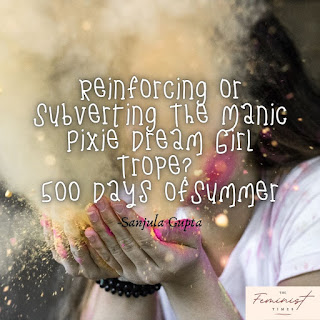Fantastic Feminist Fairytales and Where to Find Them
Over a thousand years ago, there lived a girl called Fatima Al-Fihri in Morocco. After their
father’s death, Fatima and her sister were left with a large inheritance. Fatima utilized her part
to build a mosque and a madrassa- a place for study. Al Quaraouiyine opened in the 9 th century
and it is the oldest operating university in the world today.
This is one of the tales of several extraordinary women in Little Leaders: Visionary Women
Around the World- a book that is a sample of a relatively new sub-category in feminist
literature. This category of literature consists of story books which tell the tales of important
and famous women personalities, and re-tell the classic fairytales but from perspectives
different than the original.
We are all familiar with some of the traditional English fairytales and regional folk tales. One
common thread which binds these stories, no matter how distant their places of origin, is the
way women are represented in them. Based on regressive and redundant ideas, women in
these earlier stories either did not get to play the role of the protagonist or even if they did, it
was in the capacity of the damsel in distress. Needless to say, these conventional stories often
trivialize and derogate women.
These modern fairytales, on the contrary are up in arms particularly against this narrow
representation of women. Nikita Gill’s Fierce Fairytales & Other Stories to Stir Your Soul is an
example of these. Comprised of over 90 short stories and poems, the book presents several
age-old tales and myths and presents completely different versions of them. These stories also
challenge frequently occurring motifs such as the the lack of agency in women, woman pitted
against woman, lack of diversity, distorted and limited ideas of physical beauty, aspiration of
finding romance in women, binaries between good and evil, etc. Here Cinderella’s stepmother
and stepsisters are not mute villains but they tell their side of the story in their own words.
Neither does Rapunzel wait for someone to save her here. Instead, she cuts her own hair and
using it as a rope flees from the tower and finds freedom.
Ariana Gupta’s New Age Fairy Tales is another book in which the writer re-imagines and re-tells
5 classic fairytales by subverting certain traditional ideas and emphasizing certain social issues.
Books like Good Night Stories for Rebel Girls and Little Leaders: Visionary Women Around the
World can also be said to belong to this section of literature, even though they showcase the
life stories of real women. The life stories of women, from ancient to present times, who have
not only made their mark in history, but also changed the course of history, are presented.
By including the stories of women like Mahasweta Devi, the Indian writer and activist, and
Harriet Tubman, the American freedom fighter who rescued several enslaved people, issues like
sexism, racism, slavery, colonialism, queerness, abuse, disability, class system, etc., which are
usually reserved for adult readers, are introduced to children.
Some of these accounts are reminders that the many of the rights that we today relish are the
legacy of these successful women who used their own power to uplift the condition of fellow
people. Besides a family, the legacy of women also includes their inventions, developments,
struggles and achievements.
One might argue that these latter books talk about real women and their lives, and therefore,
they cannot be categorized into what we usually perceive as children’s stories. But why cannot
the inspirational stories of real women be so normalized that they form a part of bedtime
stories? Moreover, these are not just monotonous biographies full of factual details. The
narrative style of these books, aided by a hint of magic in the already present realism, almost
imparts a feeling of imaginative tales, without moving away from facts.
Besides, the accompanying colourful, diverse and accurate portraits of the women achievers
only work towards backing these stories and anecdotes. Sometimes accompanied by props or
the “weapon” or tool of their choice, such as a pen or a microscope or a paintbrush or a book or
a plant, each portrait focuses on the talent and achievement of the woman, and is enough to
tell a story in itself.
Another concern regarding these storybooks may be that since the protagonists of their stories
are usually women, they are only meant for female readers. To this, perhaps the most fitting
reply is given by Ruth Bader Ginsburg, Supreme Court Justice and the leading actor in her own
story in Good Night Stories for Rebel Girls. She is quoted as saying “If I’m asked, when will there
be enough women on the Supreme Court, I say, ‘’When there are nine.’ People are shocked-
but there’ve been nine men, like forever, and nobody’s ever raised their eyebrows at that.” This
kind of stories is meant for all readers, regardless of their gender.
This category of stories and fairytales are meant for all readers, regardless of their gender,
because they are also instruments of societal change. They understand that even fictional tales
are not merely figments of our imagination but both reflect upon and shape our society. They
also do not underestimate the capacity of children to understand complex and contemporary
social issues. These new-age fairytales provide ample food for thought to their young readers
as-well-as inspiration for writers.



Comments
Post a Comment